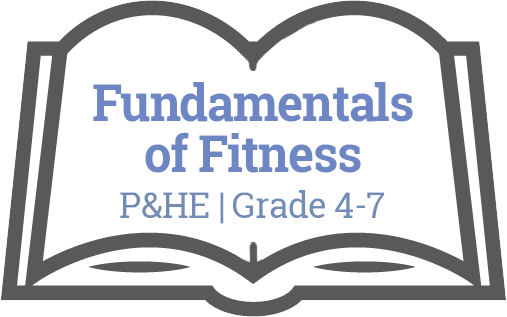
Unit Plan: Fundamentals of Athletics and Fitness
Physical & Health Education / Grade 4-7

Big Ideas
Daily physical activity enables us to practice skillful movement and helps us develop personal fitness.
Concepts:
- Fitness
- Movement
Essential Questions
Students will keep considering…
- What does it mean to be fit?
Evaluative Criteria
Teacher Evaluative Criteria:
> Fitness Log, with reflections before, during, and after exercise
> Fitness Log, with chart filled out accurately
> Movement rubric
> Communication rubric
Monitoring Progress
Teacher will monitor progress:
N/A
Potential Student Misunderstandings:
N/A
Resources
Reflection
How will teachers and their students reflect on and evaluate the completed project?
Teacher:
Next time I teach this unit I would…
Student:
My students needed:
Process:
Product:
Content:
Downloads
Unit Overview
Subject
Physical & Health Education
Topic
Fundamentals of Athletics and Fitness
Unit Overview
Elementary teachers are faced with an increasing diverse set of learners, and the chasm between physically fit and skilled students and unfit, unskilled students is widening. This unit is an attempt to develop basic running, jumping and throwing skills for those with little experience, but also to give all students the science of the biomechanics behind effective exercise. It is also an attempt to dispel stereotypical ideas around fitness, and make fitness accessible to everyone, everywhere. The focus should be on working as a team, and empowering all learners to make positive healthy changes to their lifestyle.
Grade
4-7
Unit Duration
3-4 weeks
Related Big Ideas
Science: 4-7
Math: 4-7
Music: 4-7

The following resources are made available through the British Columbia Ministry of Education. For more information, please visit BC’s New Curriculum.
Big Ideas
The Big Ideas consist of generalizations and principles and the key concepts important in an area of learning. The Big Ideas represent what students will understand at the completion of the curriculum for their grade. They are intended to endure beyond a single grade and contribute to future understanding.
Core Competencies
 Communications Competency
Communications Competency
The set of abilities that students use to impart and exchange information, experiences and ideas, to explore the world around them, and to understand and effectively engage in the use of digital media
 Thinking Competency
Thinking Competency
The knowledge, skills and processes we associate with intellectual development
 Social Competency
Social Competency
The set of abilities that relate to students’ identity in the world, both as individuals and as members of their community and society
Curricular Competencies & Content
Curricular Competencies are the skills, strategies, and processes that students develop over time. They reflect the “Do” in the Know-Do-Understand model of curriculum. The Curricular Competencies are built on the thinking, communicating, and personal and social competencies relevant to disciplines that make up an area of learning.
Additional Resources
First People's Principles of Learning
To read more about First People’s Principles of Learning, please click here.
For classroom resources, please visit the First Nations Education Steering Committee.
